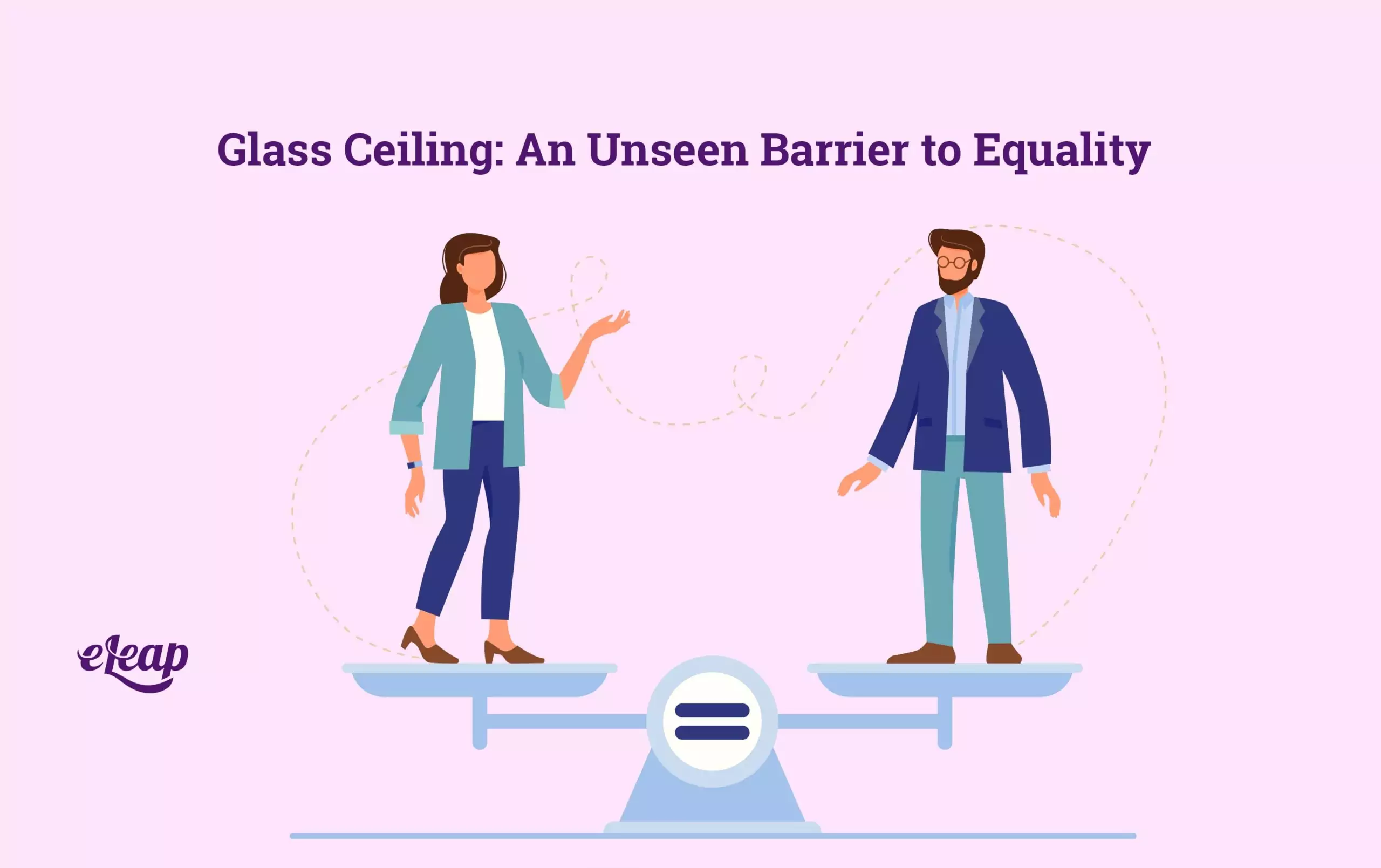Glass Ceiling: An Unseen Barrier to Equality

Glass Ceiling! In the rapidly evolving business world, continuous learning is no longer just an option but a necessity. In order to address this issue, Learning and Development (L&D) is responsible. L&D is a systematic process that involves acquiring skills, competencies, and knowledge to improve employee performance and drive organizational growth. It includes various activities, such as on-the-job training, mentoring, coaching, e-learning, workshops, and seminars.
The Importance of Learning and Development
Enhancing Employee Performance: L&D programs equip employees with new skills and knowledge to improve their performance. This leads to increased productivity and enables the organization to achieve its objectives more effectively.
Attracting and Retaining Talent: Organizations that invest in L & D are more likely to attract and retain top talent. These programs are a commitment to employees’ growth and development, making the organization a more attractive workplace.
Encouraging Innovation: By fostering a learning culture, organizations can promote innovation. L&D programs can equip employees with the skills to think creatively, identify opportunities for improvement, and implement new solutions.
Maintaining Competitive Advantage: L&D can help organizations stay competitive in an ever-changing business landscape. It ensures employees’ skills and knowledge are current, enabling the organization to adapt to market changes, technological advancements, and industry trends.
The Role of Technology in Learning and Development

In recent years, technology has transformed the L&D landscape. E-learning platforms, virtual reality (VR), augmented reality (AR), and artificial intelligence (AI) are now commonly used to deliver training programs. These technologies offer numerous advantages, such as increased accessibility, personalized learning experiences, and tracking and analyzing learning progress. They also make it possible to deliver training to remote employees, which has become particularly important in the era of remote work.
The concept of the glass ceiling has been discussed and debated for many years. It refers to an invisible barrier that prevents individuals, particularly women, and minorities, from advancing to higher positions in their careers, regardless of their qualifications and abilities. We will examine the origins and impact of the glass ceiling, as well as strategies to overcome this barrier in this article.
Understanding the Glass Ceiling Phenomenon
The glass ceiling phenomenon is rooted in societal systemic and structural inequalities. It often manifests in the form of gender and racial biases, which limit opportunities for advancement. Despite advancements in gender equality and diversity initiatives, the glass ceiling remains a significant challenge for many individuals.
- Historical Context
The glass ceiling concept emerged in the late 20th century as women entered the workforce more significantly. Although women proved their capabilities in various fields, they faced significant barriers to advancement, including discriminatory practices and stereotypes that undermined their leadership potential.
- Impact on Individuals and Organizations
The glass ceiling has far-reaching consequences for both individuals and organizations. For individuals, it can lead to frustration, demotivation, and a lack of fulfillment in their careers. It also deprives organizations of diverse perspectives, talent, and innovation, hindering their growth and success.
- Breaking the Glass Ceiling
Overcoming the glass ceiling requires a multifaceted approach involving individuals, organizations, and society. Here are some strategies that can help break through this barrier:
4.1. Education and Skill Development
Equipping oneself with the necessary knowledge, skills, and qualifications is essential for challenging the glass ceiling. Continuous learning and professional development can enhance individual capabilities and make them more competitive in the job market.
4.2. Building Supportive Networks
Creating solid networks and mentorship programs can provide individuals with guidance, support, and opportunities. These networks can offer valuable advice, access to resources, and a platform to showcase skills and achievements.
4.3. Challenging Biases and Stereotypes
Addressing unconscious biases and challenging stereotypes is crucial for dismantling the glass ceiling. Organizations should implement diversity and inclusion initiatives, promote equal opportunities, and foster an inclusive work culture.
4.4. Advocating for Change
Individuals and organizations need to be advocates for change. Increasing awareness, advocating for equal opportunities, and promoting policies that promote diversity and inclusion can work towards a more equitable society.
Conclusion
The glass ceiling represents a significant barrier to the advancement of women and minorities in the workplace. While progress has been made, work must be done to break through this barrier and create more equitable opportunities for all. By understanding the root causes, implementing strategies to challenge biases, and advocating for change, we can strive toward a future where the glass ceiling no longer exists.
FAQs (Frequently Asked Questions)
What is the glass ceiling?
Women and minorities, in particular, are unable to advance to higher positions in their careers due to the glass ceiling, an invisible barrier that prevents them from advancing.
Who does the glass ceiling affect?
The glass ceiling primarily affects women and minorities who face systemic barriers and biases in their career advancement.
What are the consequences of the glass ceiling?
The glass ceiling can lead to frustration, demotivation, and a lack of individual fulfillment. It also deprives organizations of diverse perspectives, talent, and innovation.
How can individuals overcome the glass ceiling?
Individuals can overcome the glass ceiling by continuously improving their skills, building supportive networks, challenging biases and stereotypes, and advocating for change.
How can organizations address the glass ceiling?
Organizations can address the glass ceiling by implementing diversity and inclusion initiatives, promoting equal opportunities, and fostering an inclusive work culture.
Is the ceiling limited to specific industries?
The ceiling can be found across various industries and sectors, although its impact may vary.
Are there any legal protections against the ceiling?
Many countries have laws and regulations that promote equal opportunities and protect individuals from discrimination in the workplace.
How long has the concept of the ceiling been around?
The ceiling concept emerged in the late 20th century as women entered the workforce more significantly.